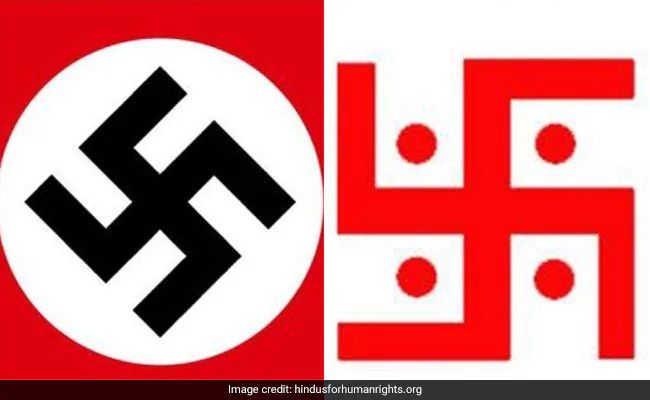
Swastik vs Hakenkreuz – learn the difference
This post is a response to the generally ignorant comments on tying Swastik with Anti-Semitism.
Swastik
The Swastik is a 3,000-year-old symbol that predates even the Egyptian civilization. Its name derives from the Sanskrit word “svastika,” which means “conducive to well-being” or “auspicious.” The symbol is distinguished by its geometric shape, which is a cross with arms of equal length and bent at a 90-degree angle. The bend can be either clockwise or counterclockwise, and both directions have been used in different cultures.
The Swastik has long been a sign of good fortune, prosperity, and protection, appearing in Hinduism, Buddhism, and Jainism, among other religions and cultures throughout Asia. It has been discovered in the archeological remnants of the Indus Valley Civilization, ancient Greece, Africa, and Native American societies, indicating its broad use as a positive symbol.
Hakenkreuz
The Hakenkreuz, sometimes known as the Nazi Swastik, is a unique version of the Swastik used by the Nazi Party in Germany in the early twentieth century. Adolf Hitler turned the emblem 45 degrees and showed it consistently in black on a white circle with a red background. This particular design became the Nazi Party’s insignia, and hence a symbol of anti-Semitism, hatred, persecution, and the tragedies of World War II and the Holocaust.
The Hakenkreuz is specifically associated with the Nazi genocide, representing racist, supremacist, and exclusionary ideas. Because of its historical significance, the Hakenkreuz is prohibited or limited in many countries, including Germany, where it is unlawful to display Nazi symbols and propaganda.
Distinctions and Impact.
The major distinction between the Swastik and the Hakenkreuz is their historical backgrounds and the values they represent. While the Swastik is an ancient emblem with good connotations throughout cultures, the Hakenkreuz is inexorably linked to the atrocities of Nazi ideology and World War II. The visual similarity between the two symbols has resulted in misconceptions and controversy, particularly in Western societies where the Hakenkreuz is more readily recognized and the Swastik’s historical, positive meanings are less generally understood.
In recent years, there have been initiatives to recover the Swastik’s old and positive meanings in cultures where it has been a symbol of auspiciousness, as well as to educate people about its historical significance outside of Nazi appropriation. However, the Hakenkreuz remains a strong symbol of hatred and prejudice, and its use is illegal and socially unacceptable in many parts of the world.
Do not confuse the two.
#Swastika #Hakenkreuz #History #Culture #Symbols #Ancient #Nazism #Heritage #Reclamation #Awareness


